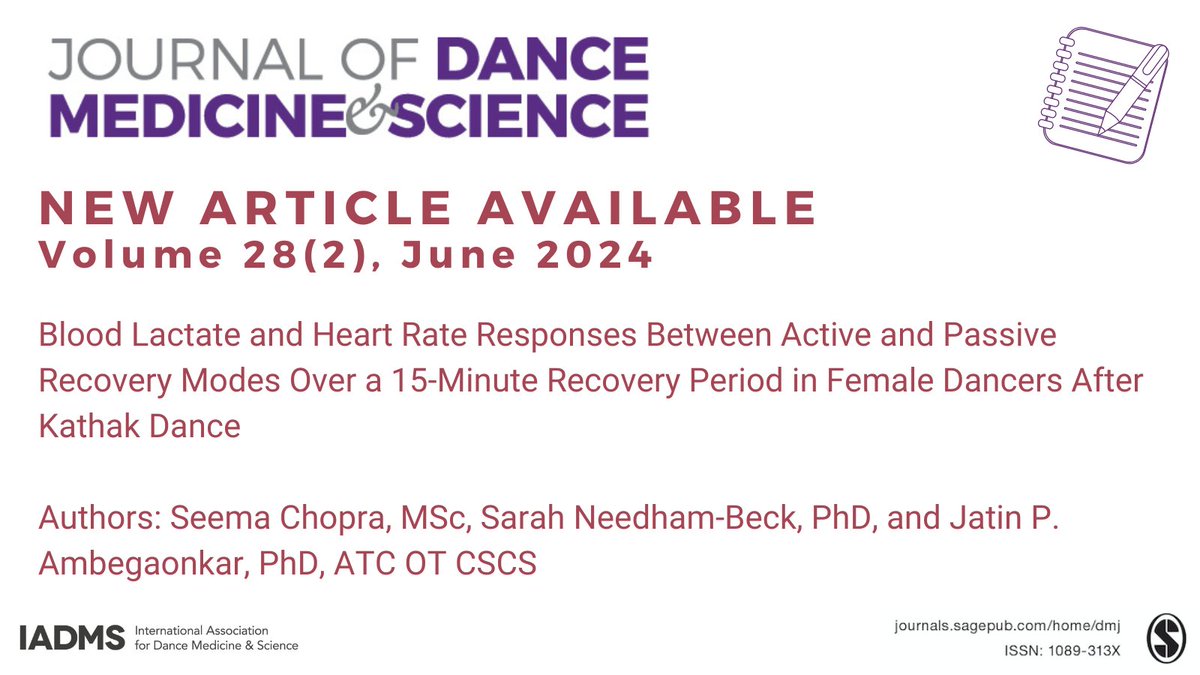
Journal of Dance Medicine & Science
@JDMS_IADMS
Followers
617
Following
4
Statuses
130
The official publication of @IADMS. Advancing dance medicine and science knowledge to promote health for dancers, and dance for health.
Joined March 2021
RT @SageHealthInfo: Read about the results from dancing and whether it improves turning in people with Parkinson’s Disease or not. #Parkins…
0
4
0
RT @SageHealthInfo: Explore the many featured articles under the Journal of Dance Medicine & Science! @JDMS_IADMS
0
5
0



















